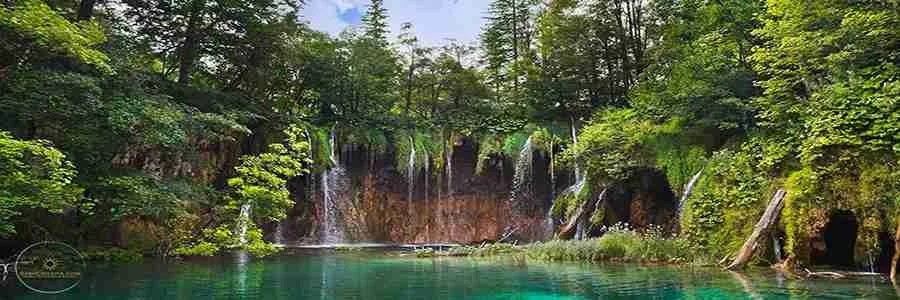Exploring Croatia’s Rich History: From Prehistoric Times to Modern Day
Croatia’s Rich Heritage: A History in Depth can be traced back to prehistoric times. Though there is limited evidence of significant settlements or tribes from that era, remains of Neanderthals have been found in the country. Estimated to be over 30,000 years old. To learn more about this fascinating part of Croatian history, visit the Krapina Neanderthal Museum located north of Zagreb.
Illyrian Tribes and Greek Conquests
The history of Croatia moves forward to around 1000 BC when Illyrian tribes settled in the country and gave their name to the areas they inhabited. These tribes include the Histri in Istria and the Delmati in Dalmatia. In the 4th century BC, Greece conquered parts of present-day Croatia. But their rule was not as extensive as one might expect, given their power elsewhere. The Greek colonies included the island of Issa (Vis) and Tragurion (Trogir).

Roman Rule and its Impact on Croatia
The Romans followed the Greeks, ruling areas of Croatia in a much more profound fashion. By 9 AD, parts of what is today Croatia, especially along the coast, became part of the Roman Empire. Major Roman settlements included Pola (Pula), Jader (Zadar), Salona (Solin near Split), and Epidaurum (Cavtat). Emperor Diocletian, who ruled from 284 AD to 286 AD, was born in Salona/Solin. And had his palace built in Split in 305 AD, elements of which are well-preserved and a must-see for history buffs. Another famous Roman landmark, the Arena in Pula, is build between 27 BC to 68 AD.
Croatia’s Rich Heritage: The Arrival of the Croats and the Rise of the Kingdom
In the early 7th century AD, Croatian tribes arrived from present-day Poland and settled across various parts of present-day Croatia. In both the northern and southern regions. The Croats accepted Christianity around 800 AD and soon established their own state ruled by princes or dukes. The first prominent ruler in Croatia was Duke Branimir of Dalmatia from 872 to 879. King Tomislav united the Croats in Dalmatia and Pannonia (northern Croatia) into one Kingdom in 925. Making the country a strong force in Europe. He was succeeded by Kings Kresimir and Zvonimir.
In the year 1091, the royal dynasty of Croatia came to a conclusion and King Ladislaus of Hungary assumed the throne. It wasn’t until 1102 that a formal union between Croatia and Hungary was established, in which Croatia maintained its status as a distinct kingdom with a governor, known as the Ban, appointed by the Hungarian king. This union with Hungary endured under various forms of governance and leaders until the end of World War I.
History Of Croatia: The Venetian Empire and Republic of Ragusa
The coast of the region saw a unique progression of history. Dubrovnik, a city of significant importance, was founded in the 7th century and later became part of the Byzantine Empire. In 1205, it was taken over by Venice and in 1358, gained independence as the Republic of Ragusa. Dubrovnik prospered for centuries due to its thriving trade and shipping industries. However, both the inland and coastal areas are eventually united into the Austro-Hungarian Empire in the early 19th century.
History Of Croatia: Croatia in the 20th Century
In 1918, after World War I, the Kingdom of Serbs, Croats and Slovenes is born. However, it was ruled by the Serbian royal family and favored the Serbs. Causing resentment among Croats. Additionally, parts of the coastline, including Istria, Rijeka, Zadar, and some islands, are gave to Italy in the 1920, Treaty of Rapallo.
In April 1941, Nazi Germany invaded the country and granted independence to Croatia under fascist dictator Ante Pavelic. His regime is notorious for its brutal rule and numerous atrocities. Leading many Croats to join the resistance movement under Josip Broz Tito. The country is at liberty in May 1945 and the Republic of Yugoslavia is officially born in November. Comprising Croatia, Slovenia, Bosnia & Herzegovina, Serbia, Montenegro, and Macedonia, as well as the autonomous provinces of Vojvodina and Kosovo, with Tito as its leader. In 1963, the country was renamed the Socialist Federal Republic of Yugoslavia.
Under Tito’s leadership, Yugoslavia broke ties with the USSR and Stalin in 1948 and prospered to a certain extent. The country’s relaxed stance on ties with the West allowed trade and tourism to flourish, and Tito effectively quashed any resentment between the republics, maintaining unity in the country. After Tito’s death in 1980, Yugoslavia continued for a few more years.
On June 25th, 1991, Croatia declared its independence from Yugoslavia, leading to a Serbian invasion. The Croats successfully defended their country under the leadership of its first president, Franjo Tudjman, who passed away in December 1999. After four years, the Croatia is at liberty.
Croatia’s Rich Heritage: Today
Croatia has come a long way since declaring 25 years of independence in 2016. Despite facing challenges, including the aftermath of the war in the early 90s, the country has undergone significant transformations. Equally important, Croatia boasts breathtaking scenery, rich culture, stunning landmarks, pristine coastline, and much more. This brief history of Croatia is just a sneak peek into the country’s intriguing past. We highly recommend visiting and discovering its beauty for yourself. Use this site as your starting point for your travel planning for an unforgettable experience in Croatia!

